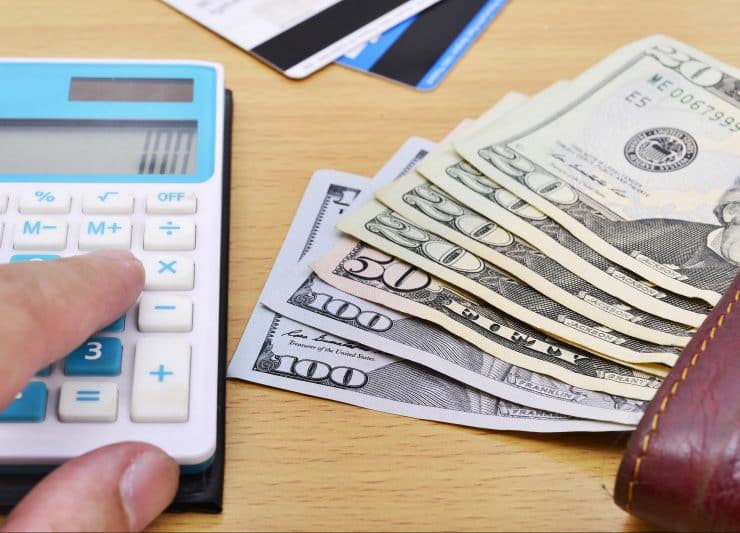Raise your hand if you’ve ever paid the minimum amount due on your credit card. If your arm is flying high, you’re not alone. The Federal Reserve’s latest economic well-being survey dug into the habits of respondents who have carried a balance on their credit cards at least once. Of them, approximately half said that they made only the minimum payment on their cards some or all of the time. That can get extremely costly — and keep you in debt, literally, for decades. But what goes into that “mystery” minimum amount you’re charged each month? And how can you use what you know about it to help yourself dig out of debt faster? Here’s the 411.
What’s behind the minimum payment calculation?
The minimum payment — the least amount of money you’re obligated to pay on your credit card each month — is a combination of two things. One of them is the card’s minimum payment, which is usually 1 to 3 percent of your total balance, depending on the card. That percentage stays constant no matter how high or low your balance is. The second factor is the amount of interest you owe.
Understand the daily balance method.
The most common way for credit card companies to calculate the interest you owe on top of your minimum payment is via what’s called the daily balance method, says Beverly Harzog, author of “The Debt Escape Plan.”
Here’s how it works in four steps:
1. Determine your card’s annual percentage rate (APR). (You can find it on your statements or your card company’s website.)
2. Figure out your daily percentage rate by dividing APR by 365.
3. Find your average daily balance. It may be on your statement. If it’s not, you can figure it out by adding up your daily balance for each day in the cycle and dividing by the number of days in the cycle (usually 30).
4. Multiply your average daily balance by your daily percentage rate (i.e. the answers to steps 2 and 3.)
That’s the amount of interest you owe this month.
What comes next?
Add the amount of interest you owe to your card’s standard minimum payment. (If you don’t know what percentage you’re charged, you can find it on your card company’s website under “terms and conditions” or “pricing terms.”)
How about an example?
Let’s say you’ve got a credit card with a balance of $1,000 and a 14.99 percent APR. And let’s say your minimum payment is 2 percent of your balance plus the interest you’ll owe. First, you figure out your monthly interest. Dividing your APR (15) by 365 gives you a daily percentage rate of 0.041. Then, calculate the average daily balance. If you started from a balance of zero and spent an equal amount every day of this billing cycle ($33.33), you’d add up each day’s balance (in this case, it’d be $33.33 + $66.66 + $99.99 and so on), ending in a total of $15,498.45. Then, you’d divide that by the number of days in the billing cycle (30). This gives you an average daily balance of about $516.62. Next, you’d multiply that number by the daily APR we calculated earlier (0.041), resulting in the amount of interest you owe for the month: about $21.18. Add that to the minimum payment percentage of 2 percent — 2 percent of $1,000 is $20 — and the total minimum payment you’d be responsible for that month is about $41.18.
Why are we telling you all of this?
Knowing how your minimum payment is calculated, although tedious, is a step along the way to understanding why it’s critical to pay more than the minimum if at all possible. If we plug the above example into a calculator for minimum repayment timelines, it shows that with our specs ($1,000 balance, 14.99 percent APR and 2 percent minimum payment plus interest), it would take over four and a half years to reach a zero balance if you just paid the minimum. The kicker: You’d pay a total of over $394 in interest charges — almost 40 percent of the original balance. But let’s say you put $60 a month towards your debt (instead of the $41.18 you’d owe the very first month). That would cut your payoff timeline down to just 14 months — and you’d only pay $94 in interest. The lesson here: Every little bit helps.
With Hayden Field






